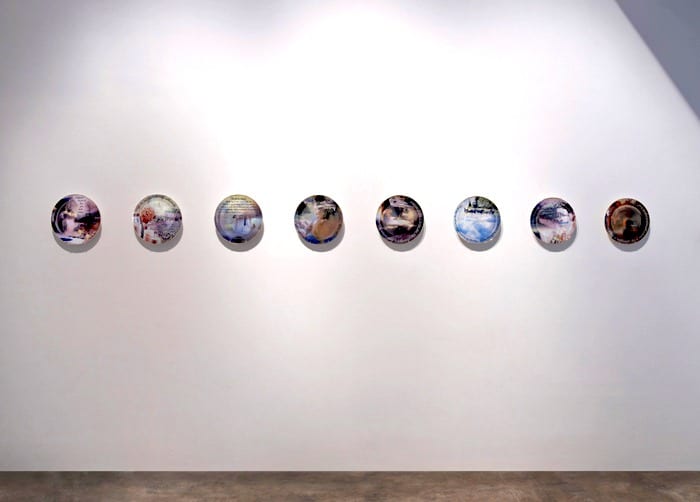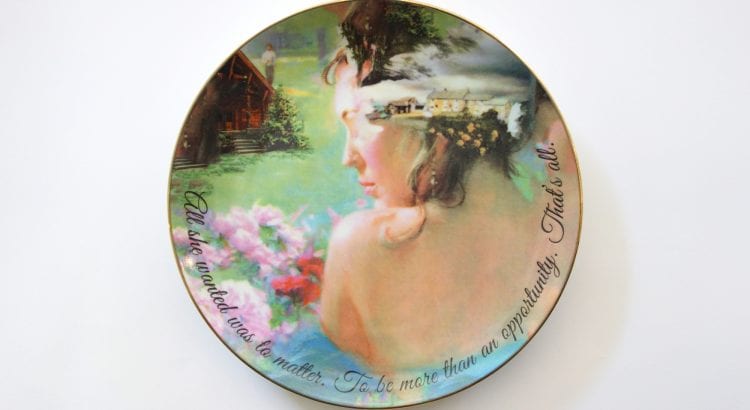Sophia Brueckner is an artist-engineer whose work offers a warm but unsettling bird’s-eye view of where technology, science fiction, and humanity often meet.
A former software engineer at Google, Sophia brings an exciting perspective to her artwork—a comprehensive understanding of how tech works with an unquenchable curiosity about how future tech might—and encourages ethical standards in designing new technology. At the University of Michigan, for example, she teaches courses such as “Science Fiction to Science Fabrication,” which combines sci-fi imagination with practical invention.
Her ongoing series, Captured by an Algorithm, is a confluence of all of the above… plus, writing and romance novels, so, you know, sign me up.
The project is composed of commemorative plates (such a strange human endeavor when you really think about it, right? Commemorative plates… like, why plates?); on these plates are dreamy landscape collages pieced together by the Photoshop Photomerge algorithm. The algorithm determines what scans of popular romance novel covers are similar and makes an image based on its decision. Voila, a plate.
Then, because these weren’t weird enough yet, each plate’s collaged artwork is stamped with a sentence from a romance novel, selected based on the number of times readers have highlighted it using Kindle Popular Highlights. (Kindle Popular Highlights are the lines in ebooks that readers highlight most often. You can see the lines other readers have highlighted when you read a Kindle ebook, helping you feel validated when a line you like is liked by others, or perhaps making you feel some insecurity if that popular line meant nothing to you until you saw how much it meant to other readers.)
What I love about Sophia’s work is that it is so uniquely and, I think, lovingly, explores how humans connect in modern leisure-fueled spheres, fluctuating between impersonality and deep resonance with another human by way of technology.
This series makes me think about how we “find” each other in a digital age. Romance novels inherently worship love and glorify that final moment of titillating connection/ climax, but they are also things we read alone—even when we’re reading it on a Kindle and highlighting a passage where others before us have lingered. Thus, these plates, especially when hung together like trophies of human desire as organized by a computer program, feel pretty and nonthreatening (even funny sometimes!) but ultimately disjointed and cold.
It’s not that hard to imagine these plates hanging in a dystopian future’s museum, commemorating the once-great human species and how they loved.

